Review: Cero One
Originally posted on March 26, 2019 at 0:01 am by Maurice Tierneyby Maurice Tierney
MSRP $3,399
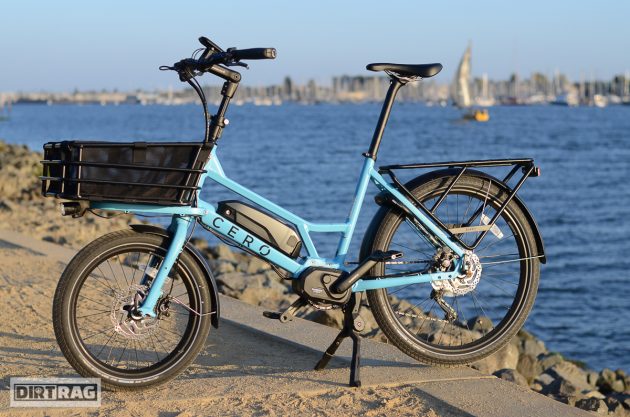 While the debate over ebikes continues on our mountain bike trails, there’s one place where there’s no question: the cargo and utility departments, where the ability to more easily transport one’s self-and-things without a car is changing lives for the better. Everyone’s lives, really, if you consider the positive effect of bikes on the environment. And just look around, electric motors are the future of transportation, whether it be scooter, bike, or self-driving car. Get used to it.
While the debate over ebikes continues on our mountain bike trails, there’s one place where there’s no question: the cargo and utility departments, where the ability to more easily transport one’s self-and-things without a car is changing lives for the better. Everyone’s lives, really, if you consider the positive effect of bikes on the environment. And just look around, electric motors are the future of transportation, whether it be scooter, bike, or self-driving car. Get used to it.
A bike like this is the best of two worlds. Having cargo capacity expands how much you’re capable of carrying, while the “E” part of the equation expands how far you can go on a burrito.
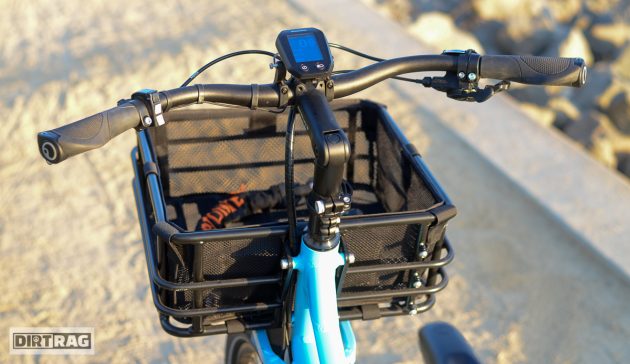 That said, the Cero One bridges the gap between sometimes-unwieldy cargo bikes and more maneuverable regular bikes. The modular design of the Cero allows for various racks and platforms to be mounted front and/or rear. The 20” small front wheel puts the front-end load low for stability., while the 26” rear wheel rolls over potholes and stuff more efficiently.
That said, the Cero One bridges the gap between sometimes-unwieldy cargo bikes and more maneuverable regular bikes. The modular design of the Cero allows for various racks and platforms to be mounted front and/or rear. The 20” small front wheel puts the front-end load low for stability., while the 26” rear wheel rolls over potholes and stuff more efficiently.
The One is powered by Shimano’s Steps 6050 250-watt drive unit for up to 20 mph of pedal assist and a 504 watt-hour battery for up to 93 miles of range, depending. There’s tons more Shimano bits including hydraulic disc brakes, 180mm/160mm rotors front and rear, and a full Shimano Deore 10 speed drivetrain. Alex rims and Schwalbe Big Ben Plus tires put the power to the ground. Total weight is 56lbs. Reasonable for something of this nature.
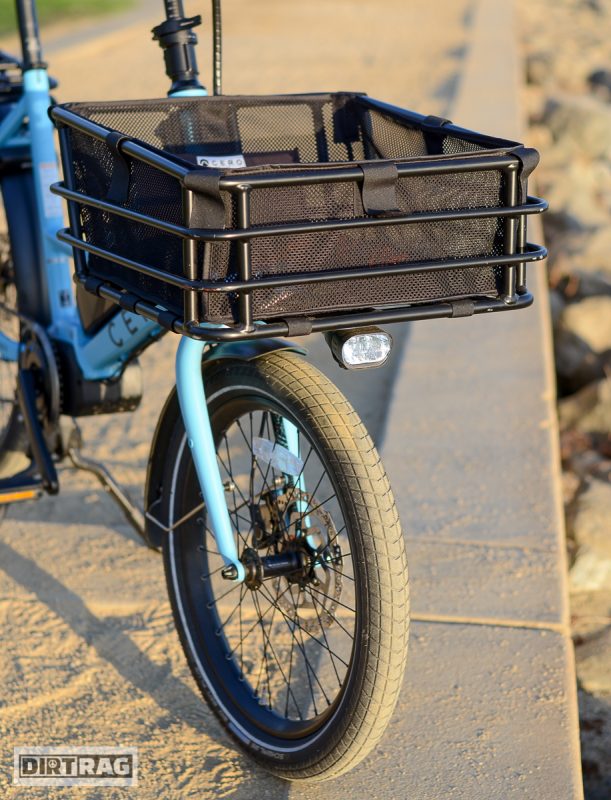
Other features include fenders and lights front and rear. Two things you won’t have to think about in case it gets dark or rains. And since the lights are wired into the power grid you’ll never have to think about charging them. A center stand is included so you’ll be able to park the bike without leaning it against something, essential for a cargo bike. An Abus wheel lock provides low-level security for casual parking.
Rounding out the package, Ergon grips and saddle provide the main contact points, while generic flat plastic pedals go under your feet. The rear rack is designed to specifically fit a Thule Yepp child seat without the need for any adapters.
Sizing-wise, there’s one frame size. A 350 mm seat post fits a wide range of humans and a telescoping stem provides a wide range of up and down adjustment. While the One is designed to fit folks from 5’2” to 6’4”, I needed a longer seat post to accommodate my 34” inseam.
I rode the Cero One for over 500 miles around the Bay Area and loved it. I rocked my Inside Line Porteur bag, which fit perfectly in the rather large front basket. It goes like this: Arrive at destination, toss on a lock, grab the bag and go. In and out quick, nobody gets hurt.
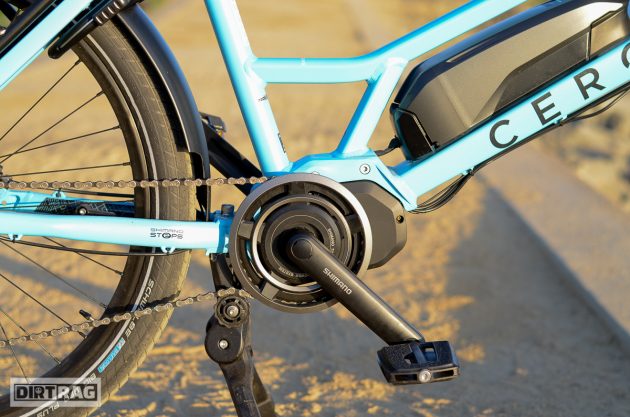
The Shimano Steps mid-drive motor provided three levels of assist. Eco, Normal, and High. Eco was plenty for most riding situations, but I used the power switch a lot in conjunction with the 10-speed drivetrain to select the level of effort, speed and acceleration desired at the moment.
The mid-drive has really become an epiphany for me. You can get a ton of torque in a low gear, which makes it super easy to perform a burnout on loose gravel, pop a wheelie up a curb, or take off quickly from a stoplight to get into traffic safely. Shifting through the gears as you accelerate to the maximum 20 mph limit is like a variable resistance trainer, where you can just set the pressure of how hard you want to pedal. You do need to use the gears, though, as torque for acceleration is just not there if you are starting off from a dead stop in harder gears.
I’ve been using the shift lever in conjunction with the power selector to determine my effort level and speed as I ride along. I really like being able to get into traffic quickly. I like being able to get through that traffic light that’s turning red. I like being able to avoid cars by getting on the gas. And I feel like I’m still getting a pretty good workout while just riding further and faster. In fact, I’d say the motor might actually encourage you to pedal harder and faster.
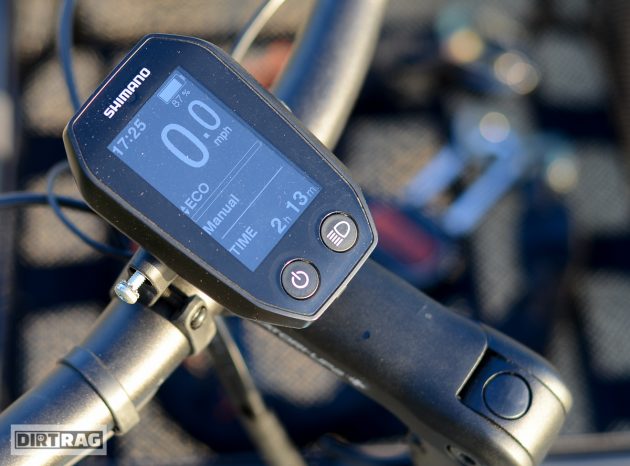 Handling was great. A nice balance between regular bike handling with the cargo bike advantages. It was easy to take on trains and push through crowds at rush hour, but the small front wheel does not like stairs so much. Bouncy-bounce. I found myself riding the elevator a lot to get to the train platform.
Handling was great. A nice balance between regular bike handling with the cargo bike advantages. It was easy to take on trains and push through crowds at rush hour, but the small front wheel does not like stairs so much. Bouncy-bounce. I found myself riding the elevator a lot to get to the train platform.
As a mountain biker, you know I had to take the Cero on some dirt. On a steep fire road climb, I was impressed with the traction of the 26” rear wheel, the strong power in the lower gears, and the general maneuverability and ease.
As a mountain biker, I also appreciated the stopping power of the Shimano disk brakes. When you’re getting up to 20 mph, it sure helps to be able to stop on time.
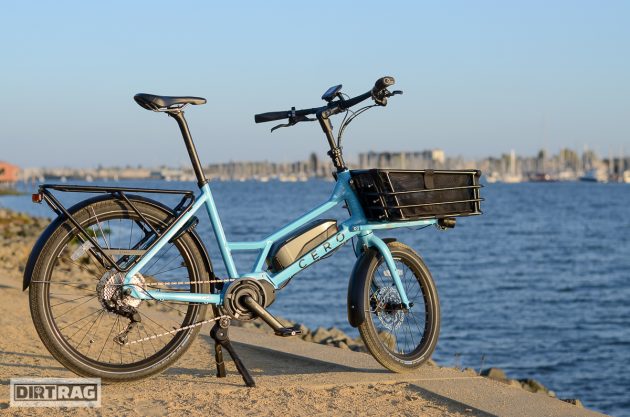
Nits? The main issue with this bike, and all the others in this Class 1 ebike category, is that the motor cuts out at a legally-required 20 mph. With the Cero, this happened at 18.7 mph according to its computer, and while I could pedal faster than the motor in certain situations, it was a bit disconcerting.
Range-wise, I was getting at least 50 miles per charge around the mostly flat Bay Area. If you take the Cero up a lot of hills or push its 300 lbs. (rider and load) capacity, it will be lower.
The One retails for $3,399 with a platform rack, with secondary racks and baskets available.
Me, I’m sold. I can get groceries and pick up things all while having a fun, recreational ride. And I no longer have to worry about getting tired after a long day of mountain biking and being tempted to get in the auto for a run to the store. More importantly, I feel safe being able to get into traffic quickly. Safety first!